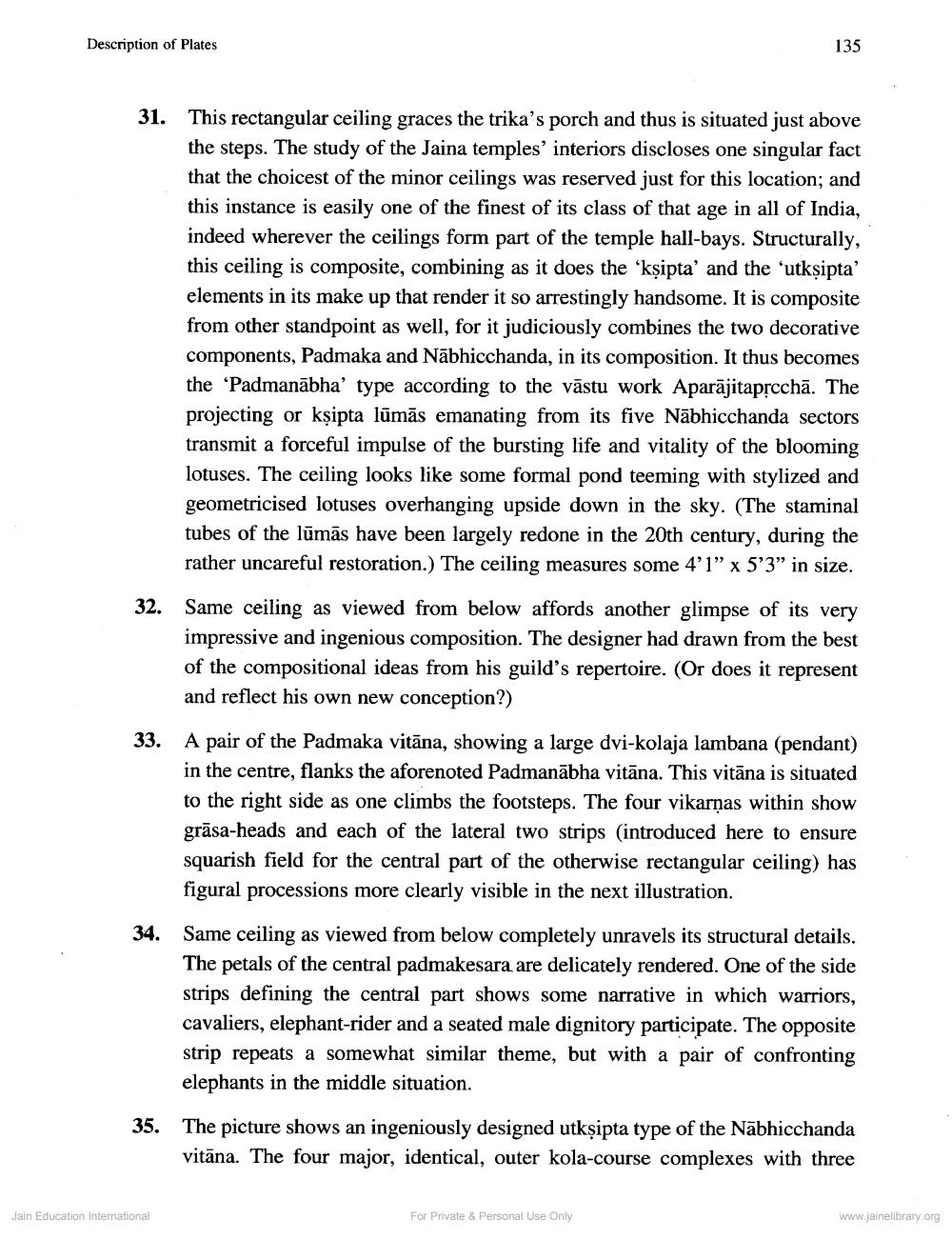________________
Description of Plates
135
31.
This rectangular ceiling graces the trika's porch and thus is situated just above the steps. The study of the Jaina temples' interiors discloses one singular fact that the choicest of the minor ceilings was reserved just for this location, and this instance is easily one of the finest of its class of that age in all of India, indeed wherever the ceilings form part of the temple hall-bays. Structurally, this ceiling is composite, combining as it does the ‘kşipta' and the ‘utkṣipta’ elements in its make up that render it so arrestingly handsome. It is composite from other standpoint as well, for it judiciously combines the two decorative components, Padmaka and Nābhicchanda, in its composition. It thus becomes the 'Padmanābha' type according to the vāstu work Aparājitaprcchā. The projecting or kşipta lūmās emanating from its five Nābhicchanda sectors transmit a forceful impulse of the bursting life and vitality of the blooming lotuses. The ceiling looks like some formal pond teeming with stylized and geometricised lotuses overhanging upside down in the sky. (The staminal tubes of the lūmās have been largely redone in the 20th century, during the rather uncareful restoration.) The ceiling measures some 4'1" x 5'3” in size.
Same ceiling as viewed from below affords another glimpse of its very impressive and ingenious composition. The designer had drawn from the best of the compositional ideas from his guild's repertoire. (Or does it represent and reflect his own new conception?)
33. A pair of the Padmaka vitāna, showing a large dvi-kolaja lambana (pendant)
in the centre, flanks the aforenoted Padmanābha vitāna. This vitāna is situated to the right side as one climbs the footsteps. The four vikarnas within show grāsa-heads and each of the lateral two strips (introduced here to ensure squarish field for the central part of the otherwise rectangular ceiling) has figural processions more clearly visible in the next illustration.
34.
Same ceiling as viewed from below completely unravels its structural details. The petals of the central padmakesara are delicately rendered. One of the side strips defining the central part shows some narrative in which warriors, cavaliers, elephant-rider and a seated male dignitory participate. The opposite strip repeats a somewhat similar theme, but with a pair of confronting elephants in the middle situation.
35.
The picture shows an ingeniously designed utkşipta type of the Nābhicchanda vitāna. The four major, identical, outer kola-course complexes with three
Jain Education International
For Private & Personal Use Only
www.jainelibrary.org




